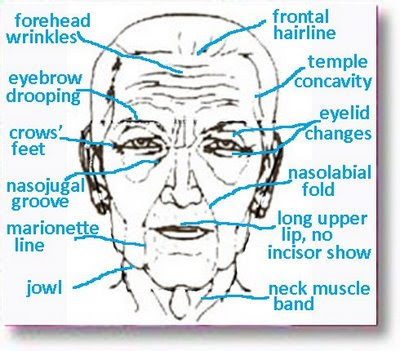Please tweet and retweet
Tweet
To make things easier I first give the prospective facelift patient a mirror for them to point out areas of concern. That way I can be assured to address these in my overall assessment. I then use a top down approach to evaluate the frontal hairline (high, low or average), brow drooping, presence or absence of forehead wrinkles and crows' feet at the outer corners of the eyes, temple wasting or concavity, aging changes of the eyelids (bags, drooping-ligament laxity, excess skin, nasojugal groove depth), nasolabial fold (laugh line) depth, amount of excess cheek skin, cheek surface contour and bone visibility, presence of vertical skin folds just in front of the ear, marionette line depth, severity of jowls, upper lip height and upper incisor show, neck fat, excess skin and muscle banding and finally the patient's overall health condition. Since a large portion of these patient's are elderly with multiple medical problems on multiple medications an Internist is frequently involved to ensure a safe operation with a smooth recovery.


